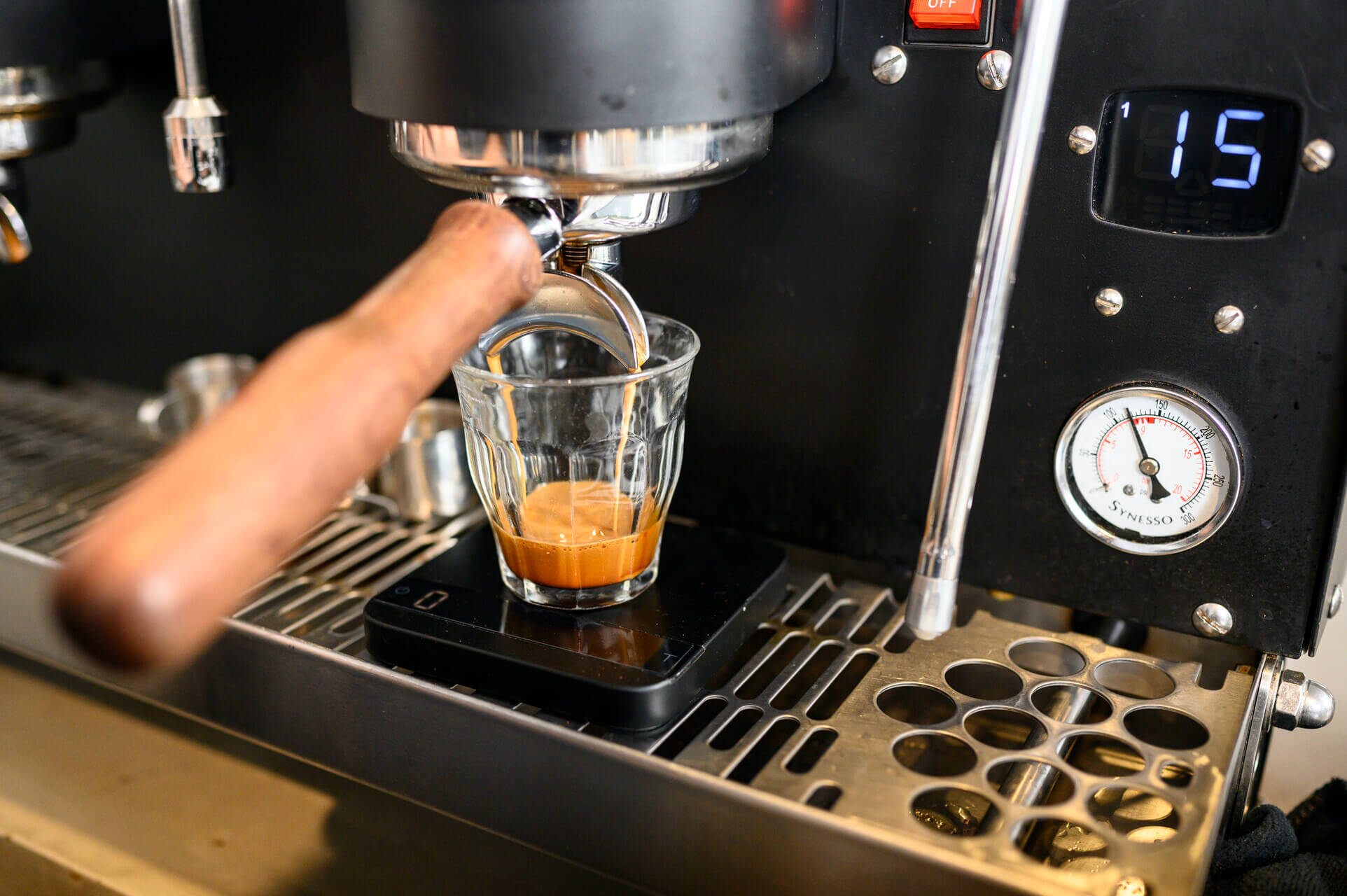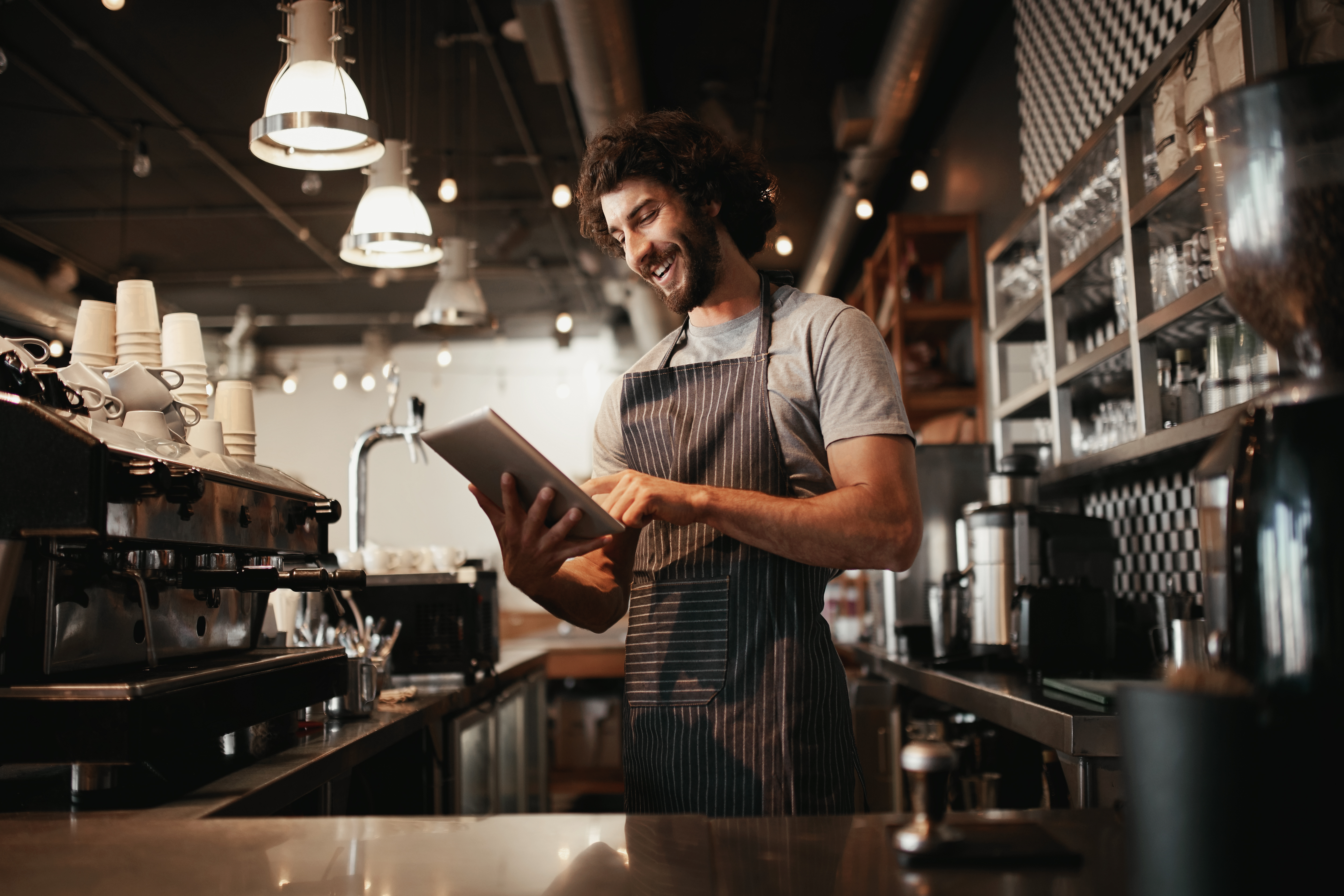Dialing-in your day right

| Cafe
Table of Contents
Dialing-in your day right
Dialing-in. The first and arguably most important task in creating a delicious espresso, meeting your quality standards, and keeping your customers coming back for more. It takes nothing more than perfectly adjusting the brew parameters with the equipment you have to get the best out of the coffee at hand. We know that this is even harder than it sounds. We also know how to make it simpler for you and the people you work with. How do we know Cropster Cafe will make things easier? Thanks to amazing feedback like this from customers:
Living without Cropster Cafe is like going back into the dark ages of coffee quality maintenance! The overview I have from this allows me to communicate very efficiently and saves the company so much time in terms of communicating recipes and coffee knowledge. –Joel Wilson-Rogers-, Head of Training, 19grams
Helping people across all aspects of the coffee supply chain means listening. We’ve listened a lot to build Cafe and we’ll be listening a lot more. Here’s what we’ve heard about life …
As a barista…
… your dial-in starting point is usually the recipe of the shift before yours. That might be scribbled on a post-it note, or simply shared in passing by the barista who is done for the day. If you are lucky, you’ll get dose, grind setting and brew time. Maybe you’ll also have a target yield, and a desired strength (TDS) and extraction level. Great starting points, but now it’s your task to adjust the parameters to not just hit the targets, but brew delicious coffee.
Changing one variable at a time, you begin your dial-in process. First shot with the original recipe to see where things are… Your shot missed the target time range? Leaving yield and strength targets untouched for the moment, you initially lock in dose and look at your grind setting. Purge the grinder and make slight adaptations. Too quick shots require a finer grind and vice versa.
You are narrowing down, brew after brew, until the brew time looks somewhat ok.
You taste it. Slurp. Hmmm…. not there yet.
This can mean one of two things: under-extracted (tasting sour or grassy, lacking sweetness, with a quick finish) or over-extracted coffee (tasting bitter, astringent, empty). Both will mean reviewing the key variables of your recipe. The grind, again. If that doesn’t quite do the trick, you have to revisit dose and/or yield. As one affects the other you will make sure to only make small changes to one variable and observe results. Pulling test brew after test brew until you find what you think is the perfect cup.
With a new coffee this laborious process may take even more time, as you don’t have a flavour reference yet. Your brew parameter blueprint may be a mere suggestion from the roastery based on roast level, a recipe from a similar coffee or even just a clean slate.
On top of this, there are other factors that will trigger and influence a dial-in process.
Working on different equipment, say another station or cafe location? Working on a coffee cart in the cold and wind versus a warm cosy indoor spot? The roast time has passed a critical threshold and you need to revisit the dose? A change to the roast profile? Or another input variable like brew water? There are so many factors that impact your quest to find the perfect representation of each coffee on your menu.
As a barista you drive the dial-in journey. The road can be bumpy and orientation difficult at times.
- How can you get a detailed map that will help you find the perfect way to brew a coffee?
- How can you reduce the forks in the road that mislead you and cost valuable time?
- How can you share your experience with fellow travellers, i.e. all the baristas, cafe managers etc in your business, so they don’t have to go through the same trial and error process?
Cropster Cafe helps answer these questions
Or read on to learn more about it

As a cafe owner,
…cafe manager, or even as coffee trainer, the goal for a solid dial-in procedure is the same: establish the baseline for the coffee quality in the cafes that you manage.
Additionally, you see the big picture: what starts with a recipe will have to be distributed across different, often spread out locations. There, the laborious yet essential dial-in process is subject to the variance in equipment stations, staff and other conditions that will likely result in an altered version of the recipe for the day and the shift going forward.
- How can you know that each location has found the ideal way of brewing a coffee?
- How can you make sure that different recipes and dial-ins result in the same, great tasting coffee for your customers across your locations?
- What are the reasons for subtle changes across locations? Are they justified? Or a lack of training?
- How can you get from anecdotes to actual facts about your dial-in process?
Looking at a day in the life of a barista, we know that dial-ins don’t come easy. Yet, you are well aware that an effective dial-in process means less coffee wasted, and less time spent in distributing information. To make things easier, we have to see how we can efficiently collect information about dial-ins, how to update recipes and make them applicable and reportable for all stakeholders involved.
Data driven dial-ins
Even in an age of ever increasing automation and smart equipment, the process of dialing-in coffee and equipment remains a human task. At the end of the day, dialing-in means reverse engineering from the taste of a beverage to the variables that create it. At the time of this writing, there is no automation to human tasting available yet, and this, in our opinion, is still a good thing. ;D
While many who work in specialty cafes will agree that having all dial-in variables in one place and putting them to use across the business is desirable, few have found a way to operate on such a basis – mostly for the lack of tools.
With Cropster Cafe we set out to change this. With Cropster Cafe dial-ins are more fun, and they provide a more comprehensive and effective way to a consistently great cup of coffee.
Or get a Cropster Cafe free trial
Recipe Sharing & references
Recipes are the baseline for any successful dial-in process. Yet, recipes differ not only between coffees but also between brewing equipment and location. So ideally you have both: A central directive to create and distribute recipes to locations as well as the ability to update them onsite or remote.
Cropster Cafe accomplishes just that and puts the recipes in front of the barista at their station. At the same time, a local head barista or cafe manager can always update the recipe and set it as a new local reference, making the dial-in process clearly traceable and easy to report on from anywhere.

A cafe owners’ central recipe overview and sharing view

A barista’s mobile view on the recipe for the day for their location
Currently our on the floor cafe staff are the ones who use Cropster Cafe most and are seeing the biggest gains from it. It helps them stay organized which is great, but I have also noticed that they seem to be more interested in the dial in process and more excited to enter in new recipes likely because the system is easy to use and they are learning something each time they use it by being able to easily compare different coffees and different roast dates with the brew compare reports. -Danycia Riley-, Cafe Manager, Roseline Coffee
Or get a Cropster Cafe free trial
Dial in and brew logs
If you are a barista it’s not unlikely that you already track the dial-in process somehow. We’ve heard of paper logs, emails and e-notes, and of course spreadsheets from our customers. The reason why these businesses are now using Cropster Cafe is that we make this log easy to create and manage within one single solution. Every barista can see their reference recipe and quickly log dial-in brews from a phone or tablet. Paired with sensory descriptors, extraction, and strength parameters it gives immediate feedback to the barista but also the cafe manager about the quality of the beverage and equipment setup.
Tracing the process effectively helps with ad-hoc adjustments to the equipment. It also creates a reusable roadmap for oneself and others to become better in the art of brewing. Understanding the influence of each variable on results that you can taste allows specific users to update a recipe reference on this basis. From an information perspective, we think this is where a consistent brew setup starts.

Logging a brew made simple from any mobile device
Reporting
As a cafe owner, coffee trainer or director of coffee it can be challenging to stay on top of dial-in processes and due diligence, particularly across locations. It’s time intensive, depends on individual feedback loops and consumes a lot of headspace, too.
With Cropster Cafe all dial-ins across staff, shifts, locations and equipment stations are in one place. Quick filter and sort options make it easy to find the information you need. Specialized reports – like our Brew Compare report – visualize the most important KPIs in a way that’s easy to consume.
Want to see how consistent the grind setting is in each of your locations? Or any other brew parameter?
Want to benchmark brew references across your cafes?
Interested in seeing how each brew reference hits their target for extraction and strength?
Or do you want to compare how different roasts or coffee origins are being brewed?
Cropster Cafe reports have you covered.

Cropster Cafe Brew Report highlights recipe
Curious how Cropster Cafe can work for your business?

